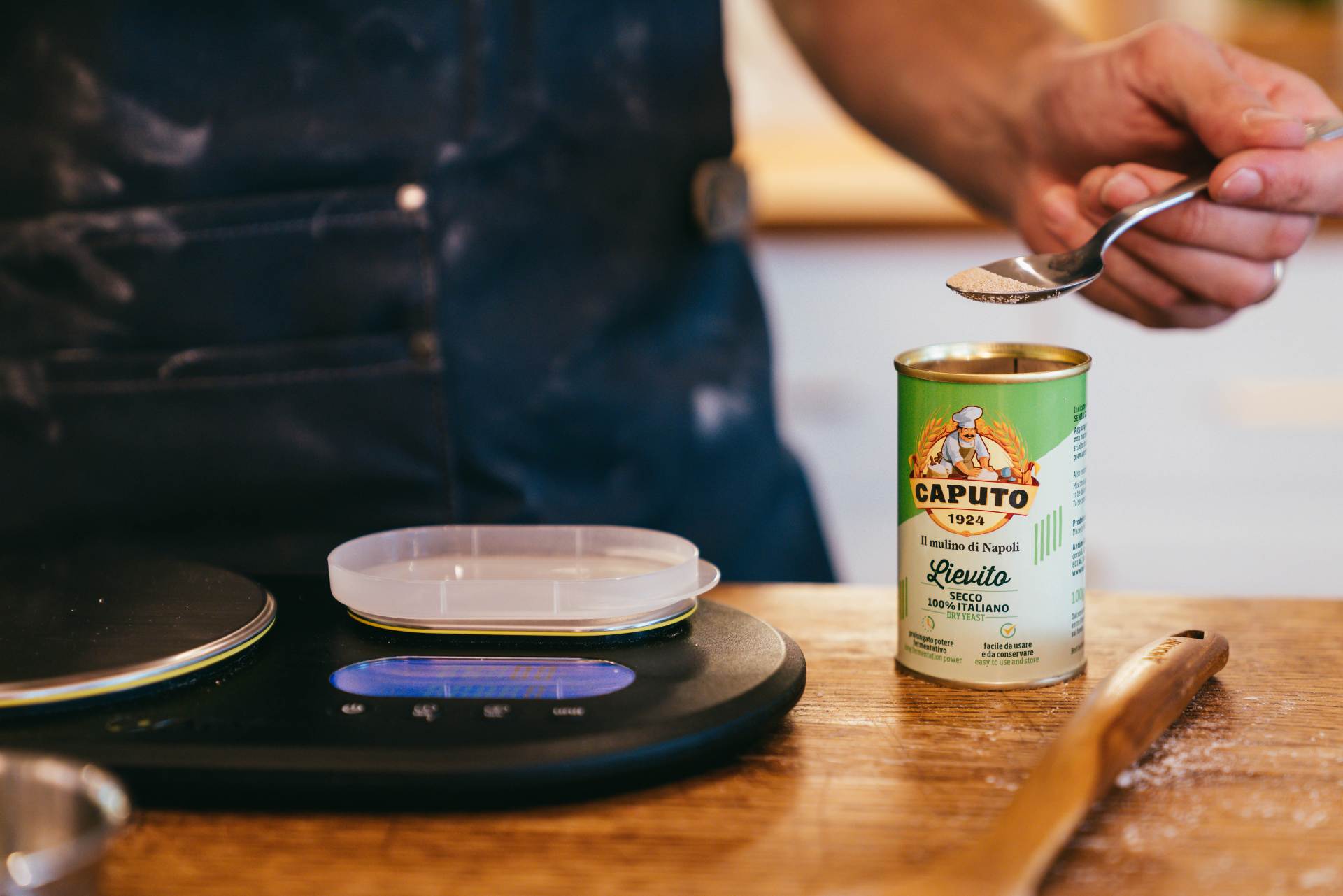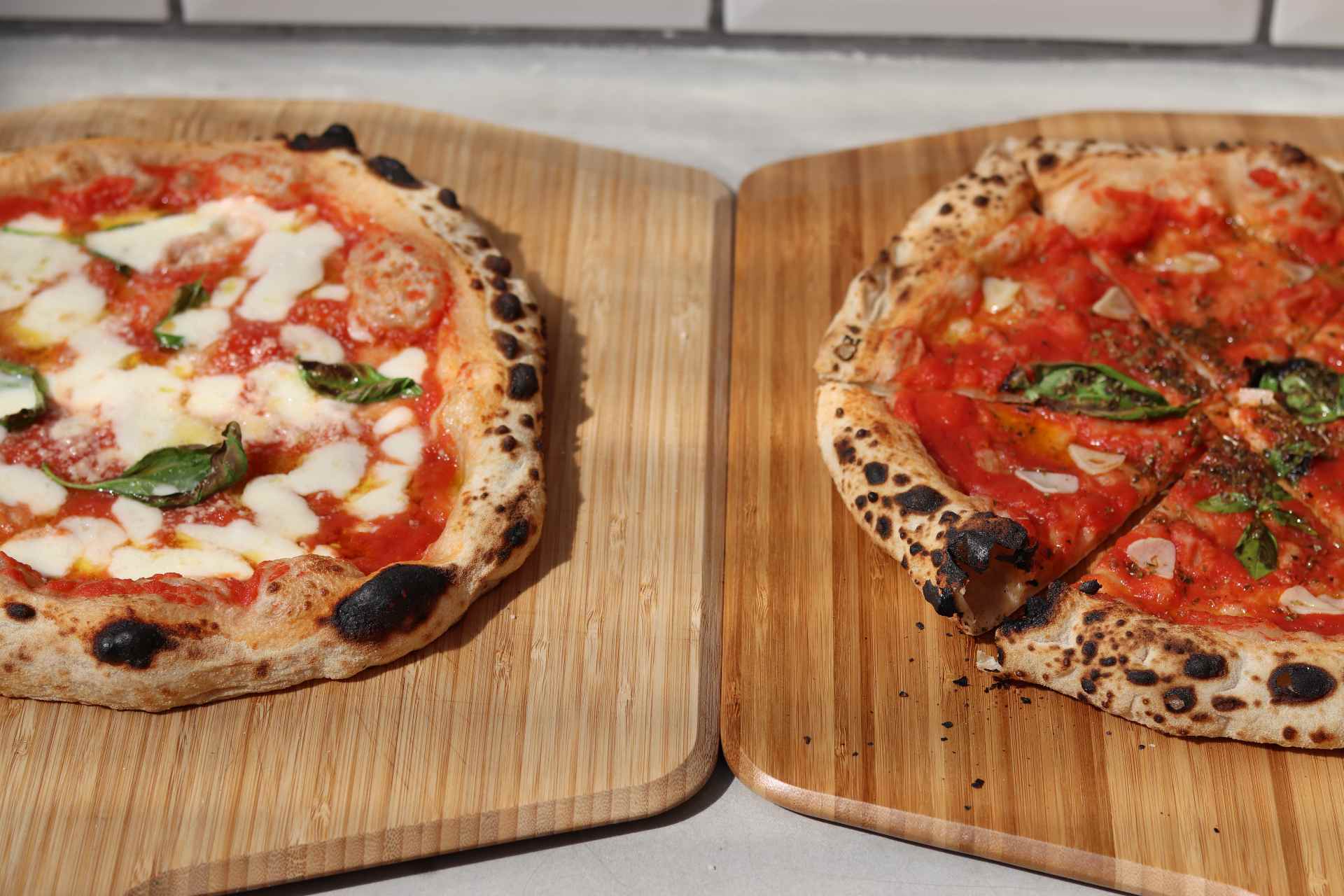Without yeast, our pizzas wouldn’t rise and we wouldn’t be able to enjoy the cornicione, sourdough, rolls, sandwich loaves and other kinds of bread that we love. Yeast does a whole lot: Besides helping us bake bread, it’s also an integral part of brewing alcohol. But what exactly is it, and where does it come from?
Fantastic fungi
Yeast is a living, single-celled organism within the fungi kingdom. To date, scientists have identified about 1,500 species. Moisture and heat activate yeast, and it works by feeding on sugars and converting those sugars into carbon dioxide and alcohol. According to Merriam-Webster, the word comes from the Old High German gesen (to ferment) and the Greek zein (to boil), both of which make sense, given the bubbles that appear in bread and beer during fermentation.
Saccharomyces cerevisiae, the domesticated strain of yeast used by pizza-makers, typically has at least some water removed by the time it gets to you. This is done to keep it in a dormant state, since yeast with a lower moisture content lasts longer. When you’re ready to activate yeast, San Francisco-based pizzaiolo and Tony’s Pizza Napoletana owner Tony Gemignani recommends warm water — never hot, and never more than 85 °F (30 °C). He usually sticks to 80 °F (27 °C).
Leaven… what’s that?
A leaven or leavener is any substance that causes your dough to ferment and expand. Yeast, sourdough and baking powder are all leavens. Leavening is the actual release of air and gas, which causes your dough to rise and take on an airy, puffy nature.
Is my yeast (still) alive?
We’ve all found that packet of Ye Olde Yeast from 1982 crammed in the back of the pantry and wondered, “Still good?” As a quick test, get a cup of lukewarm water, sprinkle in some yeast and sugar, and stir it up. If it dissolves and you get bubbles, your yeast is good to go! If it just sits there sans activity, you’ve probably got some dead yeast on your hands.
Active Dried Yeast (ADY)
Active dried yeast is just live yeast that has been dehydrated. This type is typically sold in flat, pre-portioned packets or small tins. Although it’s dormant, you still need to store it carefully. Keep it at room temperature or below, since high temperatures can kill yeast. Once opened, you can store it in the freezer in an airtight container for several months.
Although the word “active” might lead you to believe it’s ready to go, you do need to activate this yeast in lukewarm water to check its activity. This process is called “blooming,” and should cause the yeast and water mixture to foam in a few minutes. If the water refuses to bubble, your yeast won’t provide much of a rise. Active dry yeast is great for recipes with longer proofing times due to its fermentation process, and yields a slightly deeper flavor to the trained palate.

Instant dried yeast (IDY)
Instant yeast is more consistent, and more potent, than its active friend. The granules are smaller, and you’ll find that it provides a rapid rise. Unlike active dry yeast, you don’t need to dissolve it in water before mixing it with flour (though many people still prefer to). Instant yeast is very convenient since it ferments so quickly and requires 25% less than active dry yeast. You can also store it like you would active dry yeast.
Fresh yeast
Fresh yeast is harder to come by, since it has to stay refrigerated. When you can find it, it’s sold in small cubes and should feel like a crumbly putty.
Fresh yeast has to be stored very carefully. If mold appears on the yeast, it is no longer safe to use. It generally lasts for a week or two when stored in an airtight container in the fridge. (It can also be frozen, but make sure to wrap it tightly in plastic wrap.)
Fresh yeast is much stronger in flavor than the dried varieties, and bakers prefer it for sweeter recipes. If you’re subbing it into a recipe, we recommend using roughly 70% more fresh yeast versus instant yeast, or around 60% more than active dry yeast.
Nutritional yeast
This staple of vegan cooking might sound like a leavening agent but it’s really only good for flavor due to the way it’s processed. The high heat kills the live cultures, rendering the yeast unable to feed on sugars and create the all-important carbon dioxide, so don’t use this expecting a rise. That said, nutritional yeast is great as a vegan substitute for cheese: Mix it with breadcrumbs and toss over marinara for a sfincione (a soft, fluffy Sicilian-style pizza) effect, or sprinkle over a crust for a vegan umami.
Preferments
Popular in bread making, preferments are a type of starter made with a combination of flour, water, and either yeast or a sourdough starter. After mixing, the preferment sits for several hours before getting incorporated into the dough. You’ll hear about four types that are commonly used:
-
Sourdough starter
is a “wild” yeast made from fermented flour and water. It comes together when a mix of bacteria from any number of sources — the air, your hands, the jar, etc. — marries with flour to create a homemade leavening for bread, pizza dough and other baked goods. Sourdough tends to rise slower than commercial yeast, so you may have to wait longer, but the end result will be deeply flavorful and easy to digest.
-
Poolish
might sound complex, but it’s essentially a pre-ferment that was first introduced to Europe by Polish bakers. It’s similar to a sourdough starter, but you don’t have to spend days nurturing and feeding it. All it calls for is a small amount of yeast (dry or fresh) and equal parts flour and water, which brings it to a whopping 100% hydration. After mixing, it only needs to sit for about 24 hours, so you can add it to your dough the very next day.
-
Biga
is often mentioned in the same breath as poolish because they’re so similar. It also takes a small amount of yeast combined with flour and water, then pre-ferments before getting added to your dough. However, at around 50-60% hydration, biga is stiffer and less liquid than poolish, making it significantly easier to handle.
-
Tiga
was invented by "The Pizza Bible" author and 12-time World Pizza Champ Tony Gemignani. It’s like a biga, but with a higher hydration (around 70%), which makes it trickier to handle.
Even with so many choices, there isn't necessarily a right or wrong leaven to use. Some dough fans will vehemently argue that biga is better, while fresh yeast is de rigueur in Napoli. Chalk it up to different pizza styles and taste preferences, and keep experimenting along your personal pizza journey. If you want extra guidance, our dough calculator app takes every variable into consideration, including temperature, hydration, dough ball size, proofing time — and, of course, type of yeast.









